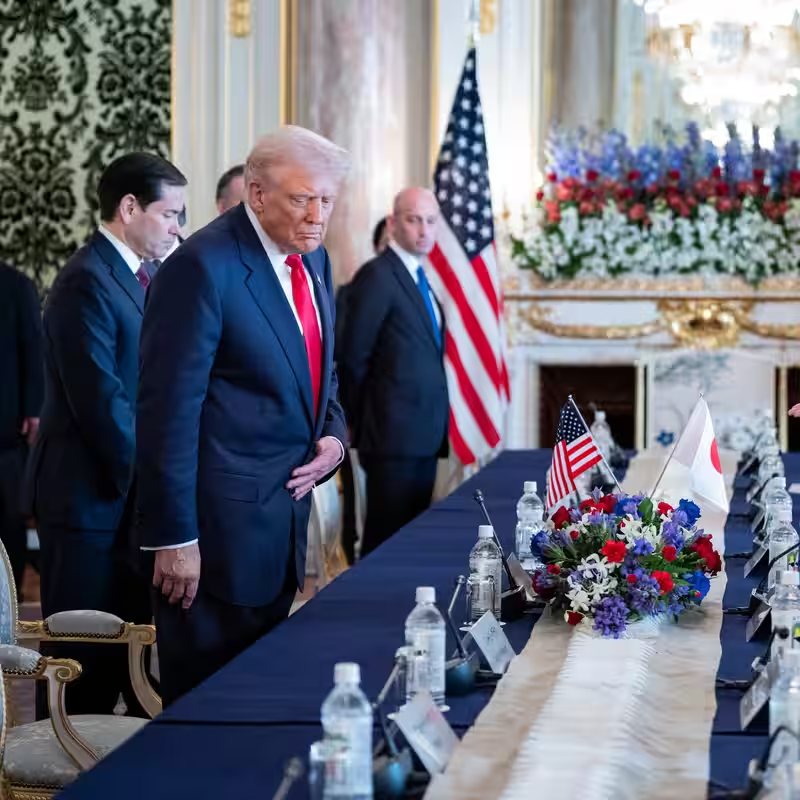Table of Contents
- Diplomatic Dinner with a Twist
- Why American Rice Raised Eyebrows
- Trade Deal Behind the Menu
- Japanese Public Reacts
- Culinary Perspective
- Sources
Diplomatic Dinner with a Twist
When former U.S. President Donald Trump met Japan’s newly appointed Prime Minister Sanae Takaichi in Tokyo on Tuesday, October 28, 2025, the menu made headlines almost as much as the meeting itself. Instead of the customary Japanese staples, the lunch featured American rice and U.S. beef—prepared, according to a White House statement, “deliciously made with Japanese ingredients.”
This culinary choice marked a sharp departure from longstanding diplomatic tradition. In past U.S.-Japan summits, leaders have proudly showcased local fare: Shinzo Abe treated Trump to premium Wagyu beef in 2019, while Fumio Kishida served President Biden a spread of regional salmon, chicken, and produce in 2022.
Why American Rice Raised Eyebrows
In Japan, rice isn’t just food—it’s cultural identity. Revered as a symbol of national pride and agricultural heritage, rice holds a sacred place in daily life and ritual. That’s why serving imported American rice at a high-profile state lunch stunned many observers.
Compounding the surprise: Japan is currently grappling with a domestic rice shortage that has driven prices to record highs. In such a climate, the decision to serve foreign rice felt especially jarring to some citizens.
Trade Deal Behind the Menu
Experts say the menu was no accident. According to Rintaro Nishimura, a senior associate at The Asia Group in Tokyo, Prime Minister Takaichi’s office likely made a calculated goodwill gesture toward the U.S.—and a subtle nod to a recent trade agreement.
In July 2025, Japan and the United States finalized a trade deal that included a provision to increase U.S. rice imports by 75%. Historically, Japan maintained strict quotas on rice imports to protect its domestic farmers. But with supply tightening and prices soaring, importing American rice has become a pragmatic economic alternative.
U.S. Ambassador to Japan George Glass didn’t miss the symbolism. “The use of American rice shows that the Japan-U.S. partnership has deeply permeated all fields,” he said, sharing a photo of the menu on social media that also highlighted eggplant from Nara—Takaichi’s home prefecture.
Japanese Public Reacts
Not everyone welcomed the diplomatic gesture. On Japanese social media, the move sparked a wave of disappointment:
“Why isn’t it Japanese rice? What a shame.”
“I’m sorry, but I cannot compromise on rice. It is the soul of the Japanese people.”
For many, the substitution felt like a betrayal of culinary tradition during a time of national scarcity.
Culinary Perspective
Still, some in the food industry downplayed the controversy. Takashi Kobayashi, a Tokyo-based rice retailer, noted that the distinction between premium Japanese rice and imported varieties often disappears in heavily seasoned dishes.
“According to the ambassador’s menu photo, at least some of the rice was served au gratin,” Kobayashi pointed out. “In that context, the origin matters less.”
He added with a wry tone: “It’s not a bad idea to show she’s trying to work with the U.S. We shouldn’t upset Trump.”
Kobayashi also questioned whether Trump would even notice the difference, suggesting the former president may lack the palate to appreciate fine Japanese rice—a comment that reflects both cultural pride and political pragmatism.
Sources
The New York Times: “On the Menu for Trump in Tokyo: American Rice”
World Bank data on rice imports to Japan (2024)




